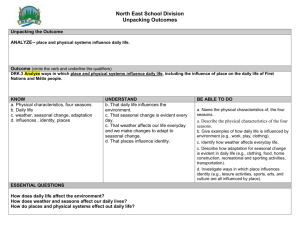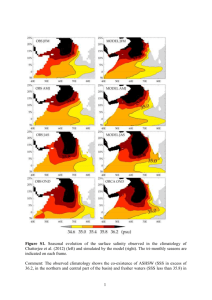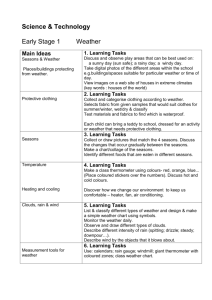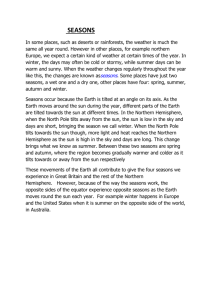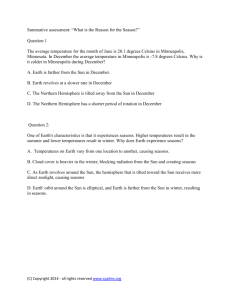Seasons Changes – Overview - Center for Learning in Action
advertisement
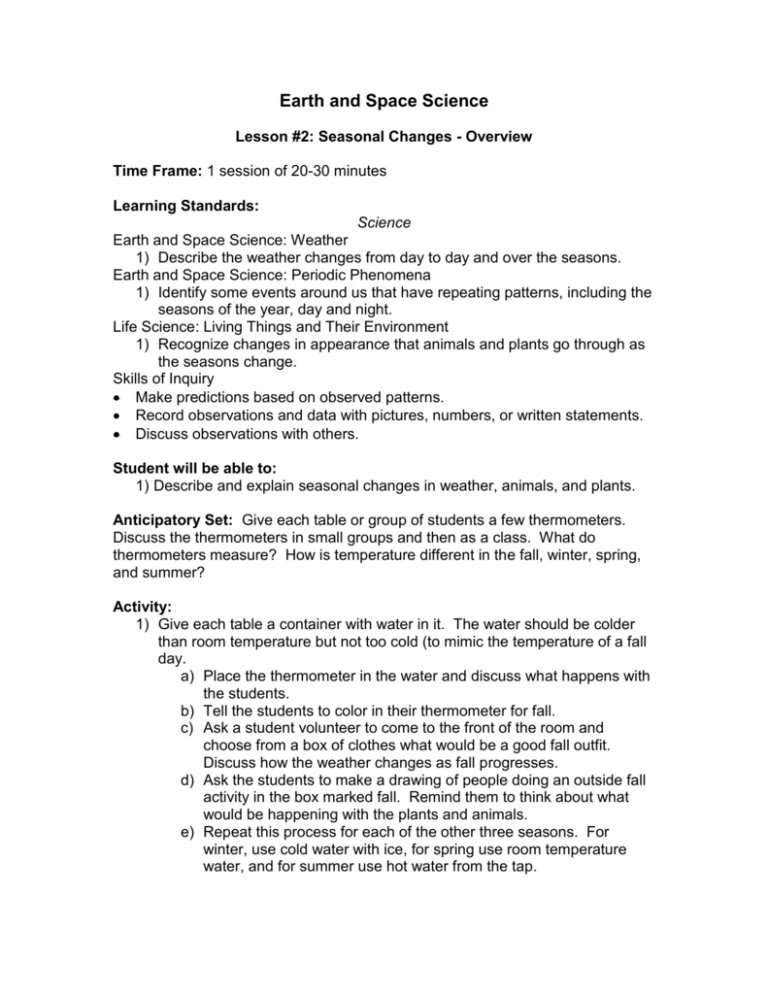
Earth and Space Science Lesson #2: Seasonal Changes - Overview Time Frame: 1 session of 20-30 minutes Learning Standards: Science Earth and Space Science: Weather 1) Describe the weather changes from day to day and over the seasons. Earth and Space Science: Periodic Phenomena 1) Identify some events around us that have repeating patterns, including the seasons of the year, day and night. Life Science: Living Things and Their Environment 1) Recognize changes in appearance that animals and plants go through as the seasons change. Skills of Inquiry Make predictions based on observed patterns. Record observations and data with pictures, numbers, or written statements. Discuss observations with others. Student will be able to: 1) Describe and explain seasonal changes in weather, animals, and plants. Anticipatory Set: Give each table or group of students a few thermometers. Discuss the thermometers in small groups and then as a class. What do thermometers measure? How is temperature different in the fall, winter, spring, and summer? Activity: 1) Give each table a container with water in it. The water should be colder than room temperature but not too cold (to mimic the temperature of a fall day. a) Place the thermometer in the water and discuss what happens with the students. b) Tell the students to color in their thermometer for fall. c) Ask a student volunteer to come to the front of the room and choose from a box of clothes what would be a good fall outfit. Discuss how the weather changes as fall progresses. d) Ask the students to make a drawing of people doing an outside fall activity in the box marked fall. Remind them to think about what would be happening with the plants and animals. e) Repeat this process for each of the other three seasons. For winter, use cold water with ice, for spring use room temperature water, and for summer use hot water from the tap. Closure: As time permits, ask students to share their drawings for fall, winter, spring, and summer and discuss all of the differences in weather that they noticed over the course of the school year. Assessment: Participation in class discussions and activities, completion of the seasonal changes chart Resources and Materials: Containers or beakers for water, thermometers, box with different types of clothes, student seasons chart, crayons, colored pencils, and markers


